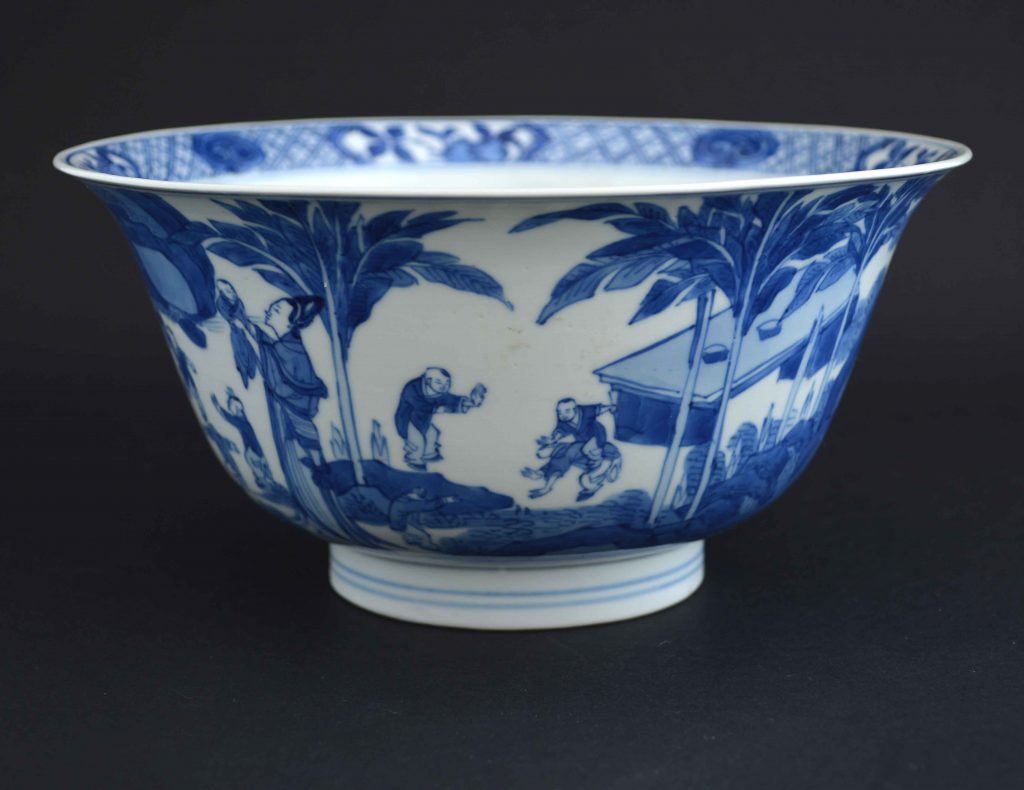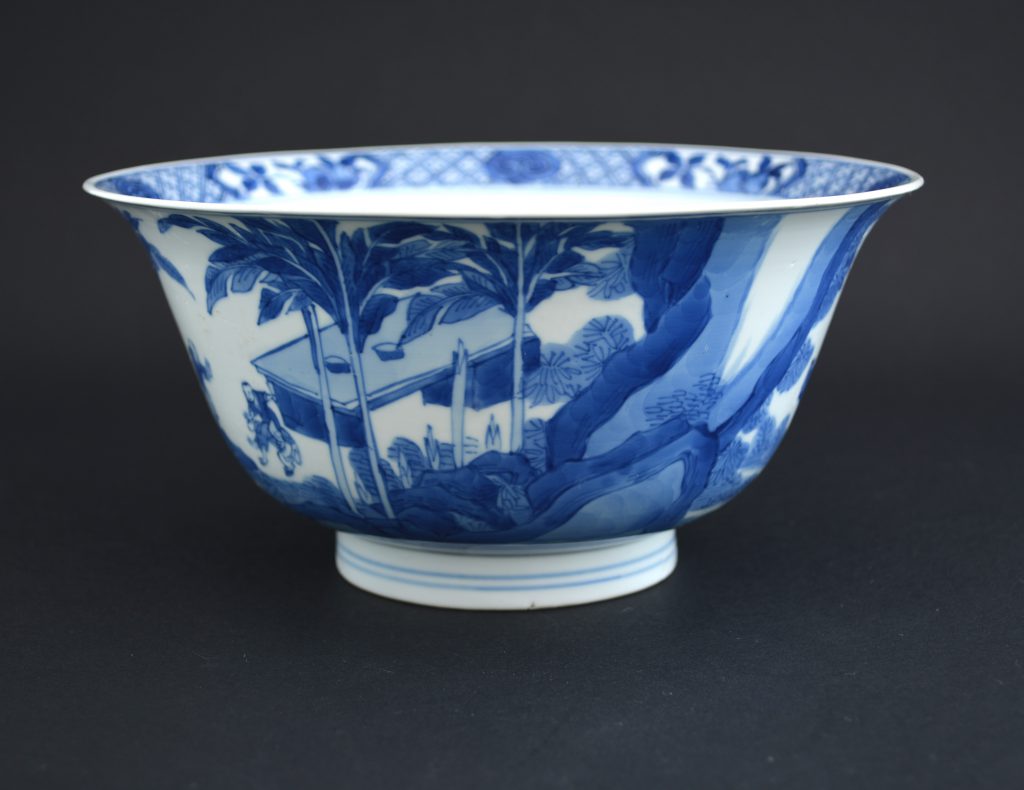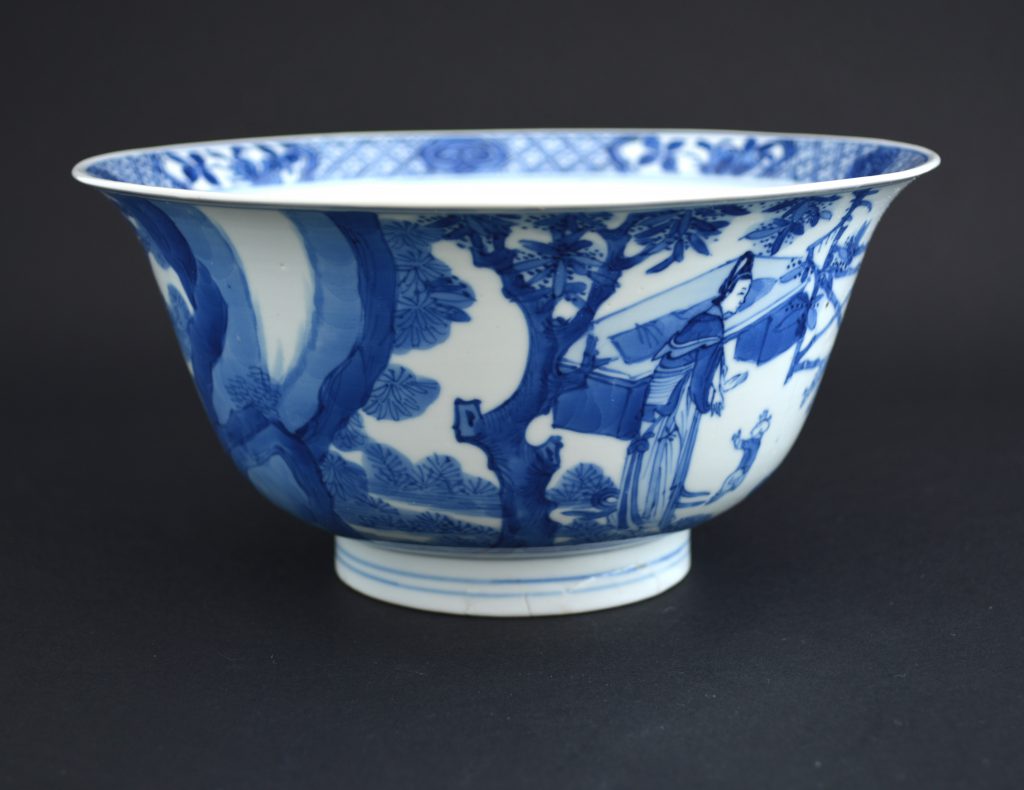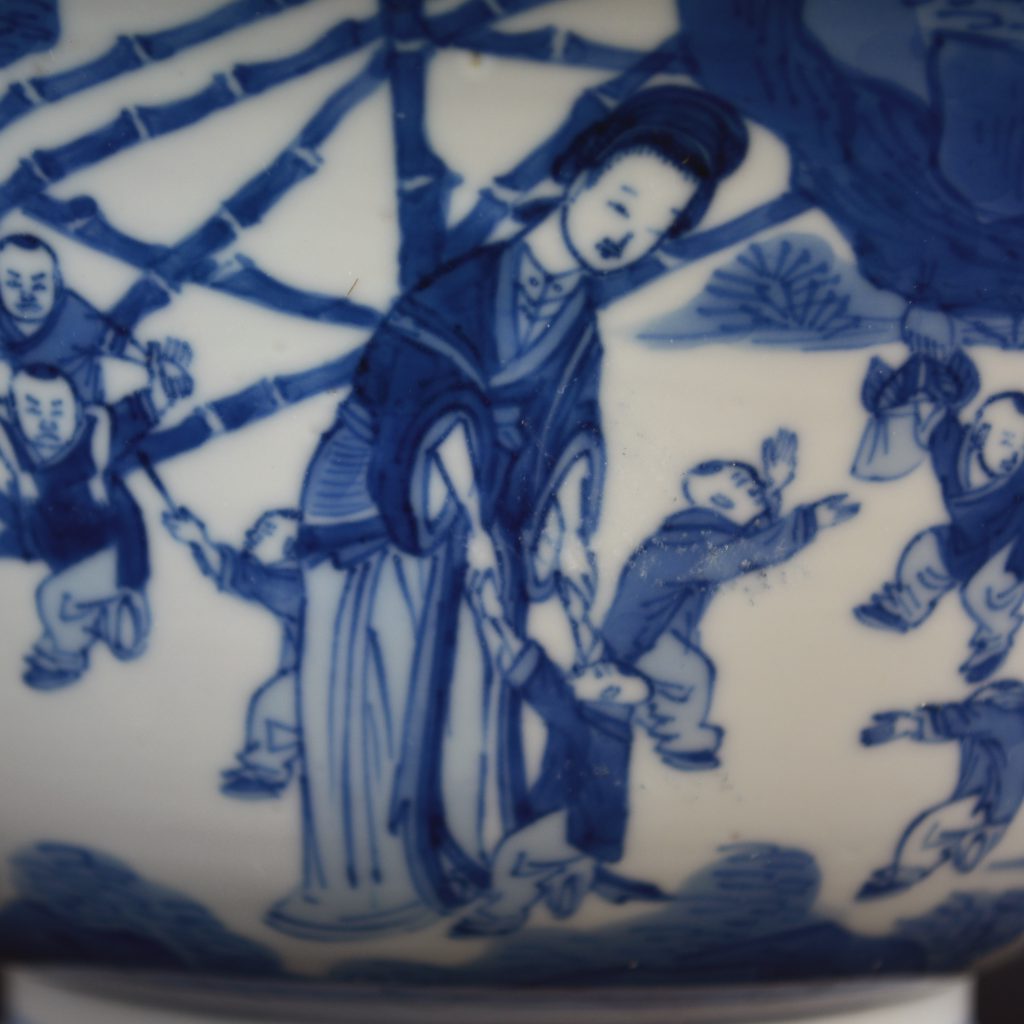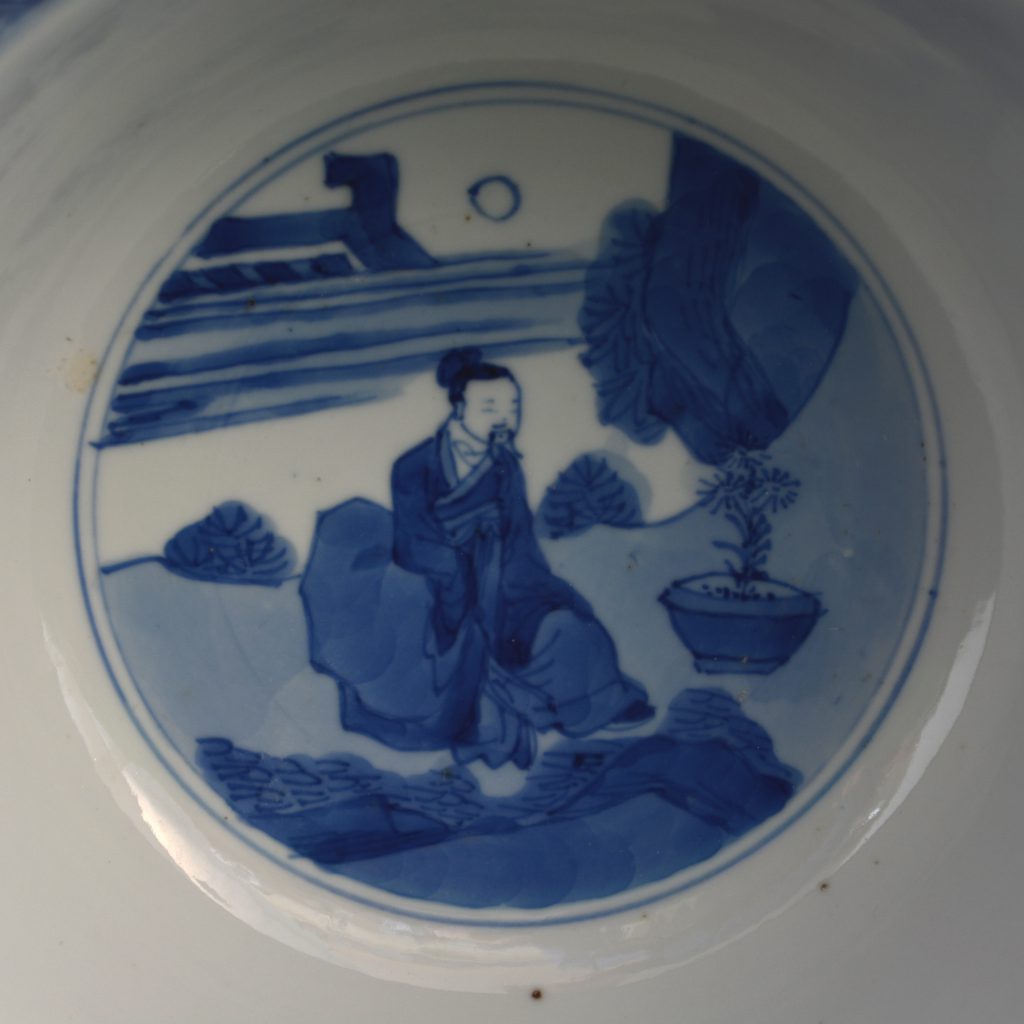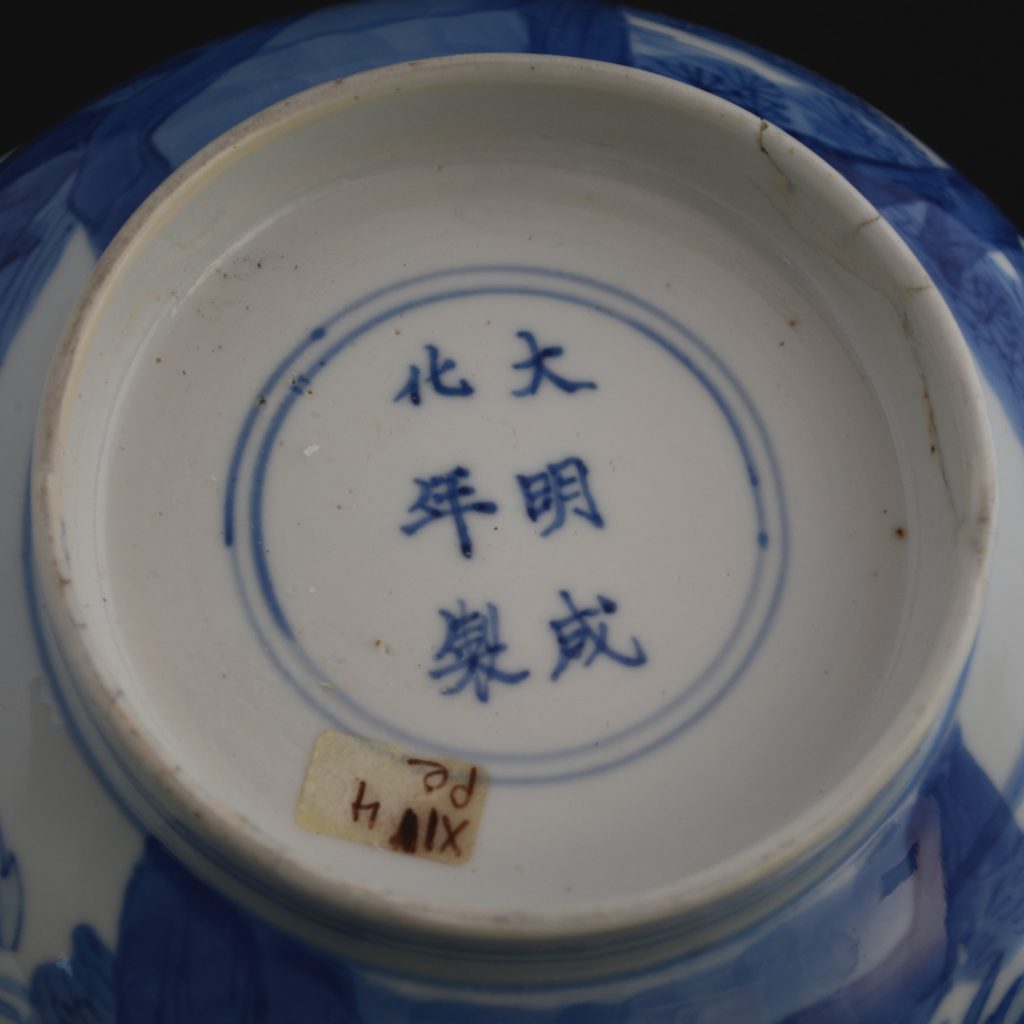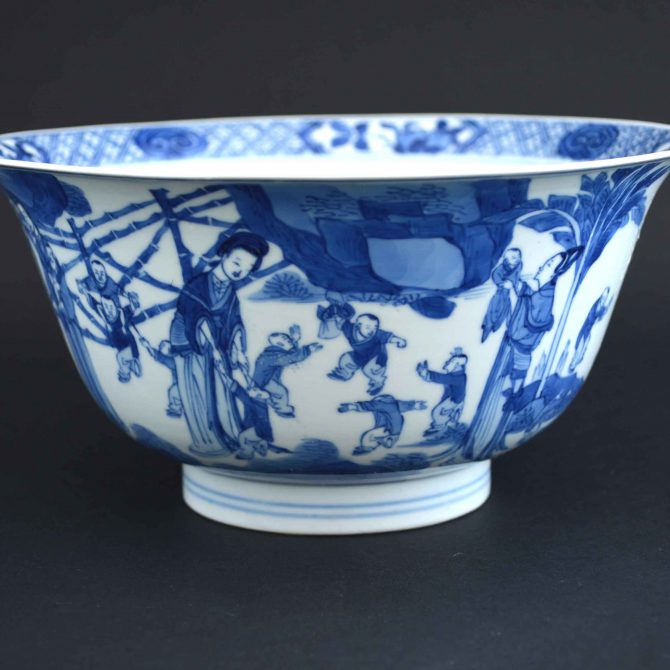
KANGXI 1662 – 1722 Chinese Export Porcelain
A Finely Painted Kangxi Blue and White Porcelain Bowl c.1690-1710. The Thinly Potted Blue and White Porcelain Bowl is Decorated with Vibrant Tones of Cobalt Blue. The Flared Sides of the Bowl are Decorated with Two Elegant Ladies Playing with a Large Group of Rather Excitable Boys in a Fenced Garden with Banana Plants and a Long Table. This Boisterous Scene is Contrasted with the Well of the Bowl Which has a Roundel with a Quite Still Subject. It Depicts a Man in Contemplation with a Plant in a Pot in Front of Him. The Base with an Apocryphal Six Character Chenghua Mark within Concentric Circles.
SOLD
- Condition
- No damage but there are large firing faults to the footrim, some filler used on the outer edge.
- Size
- N/A
- Provenance
- Salle de Ventes des Beaux-Arts-Bruxelles November 9th 1948. Monsieur and Madame Robert de Strycker : The Belgium couple Professor Robert de Stryker and his wife discovered Chinese art during a visit to London in the 1930`s. In 1938 they started to collect, porcelain, cloisonné, prints and lacquer, amassing a large and interesting collection with objects from the Neolithic period to the Qing dynasty. Fortunately the provenance of most of the pieces in the collection have been recorded with details the date of purchase, the name of the gallery or shop they were purchased from as well as the price paid. The De Strykers had a great passion for what they purchased but also an academic approach to their subject. Professor De Stryker exchanged a large number of letters with Harry Garner and Fritz Low-Beer as well as establishing a close relationship with the Curator of the Guimet Museum in Paris. Some pieces in their collection where shown in the exhibition `Oudekunst in Leuvensprivebezit`, this ran from July 18th to October 18th 1964.
- Stock number
- 24209
Information
Apocryphal Marks :
Apocryphal marks are frequently encountered on Kangxi Blue and White Porcelain, the mark of the Ming Emperor Chenghua who reigned from 1465 to 1487 being by far the most common, other Ming marks include Jiajing (1522-1566) and less frequently Wanli (1573-1620). These marks were not added to the piece to deceive, but more as a sign of reverence to earlier potters of the Ming dynasty (1368-1644). Occasionally they are used on pieces copying Ming Porcelain, these objects were probably made for collectors who could not afford the Ming original.
